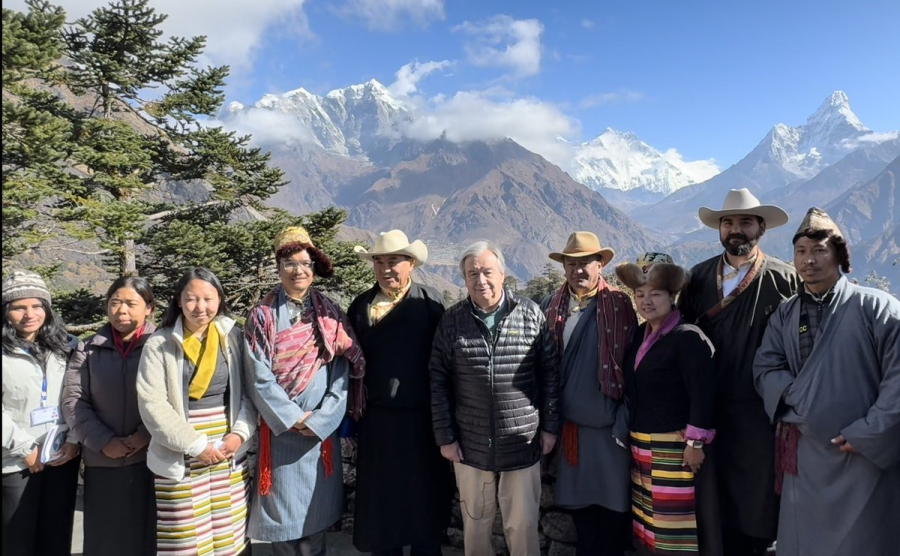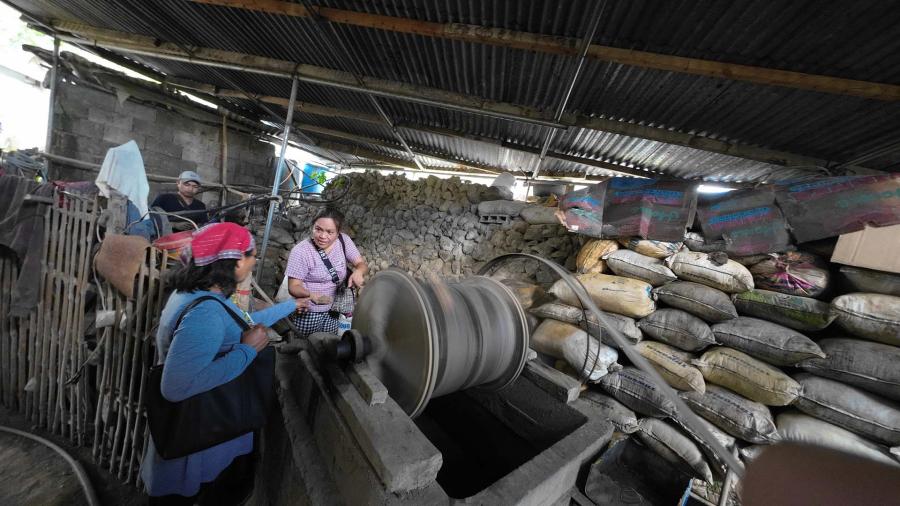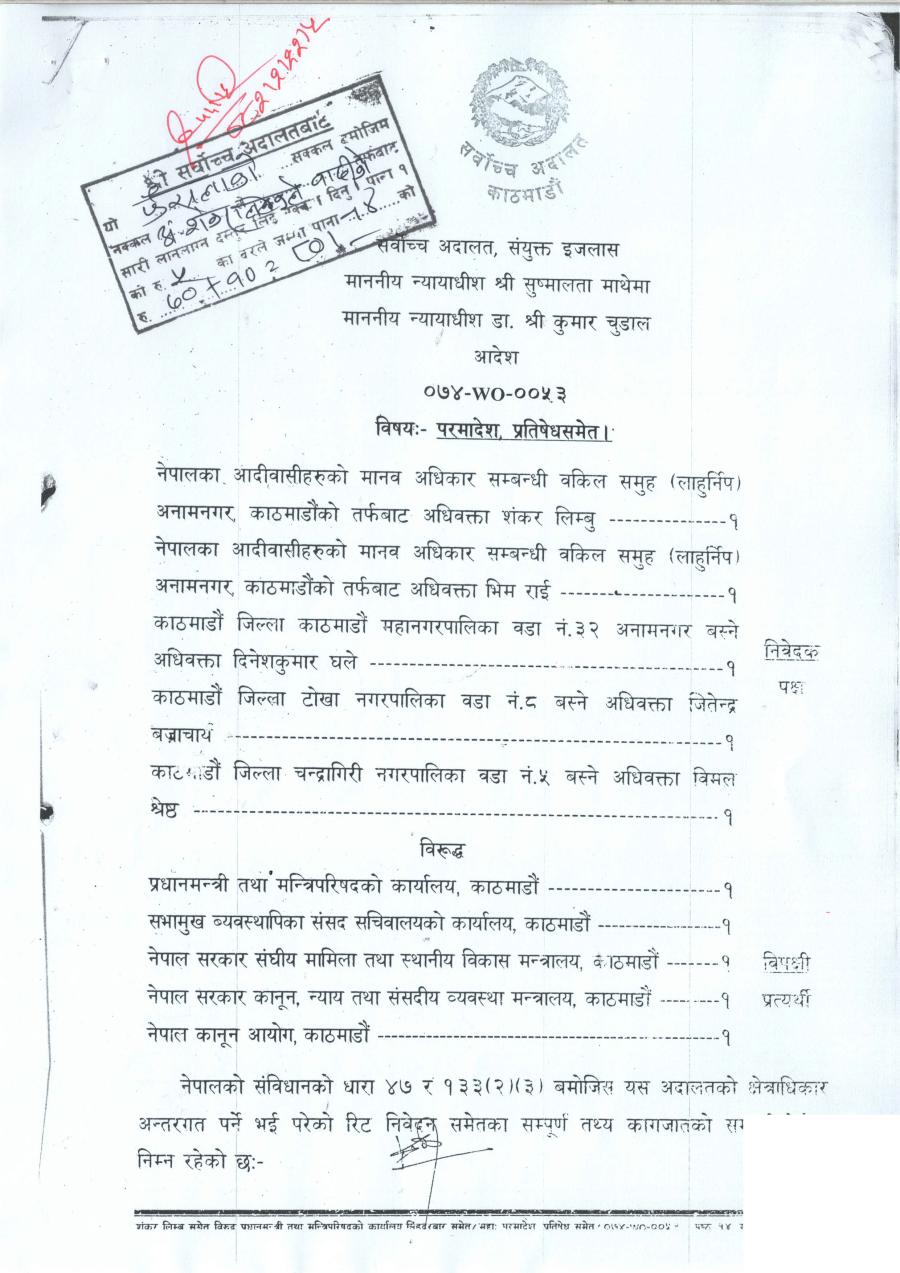By Dev Kumar Sunuwar (Koĩts-Sunuwar, CS Staff)
Seven years ago, a group of us working Indigenous journalists in Nepal realized a collective dream to give voice, access, and participation to a largely ignored, ethnically diverse sector of Indigenous Peoples. Our mandate was to inform, educate, and entertain Indigenous Peoples in their native languages, and in doing so, to enrich Nepali culture as a whole.
Indigenous Peoples in Nepal are known as Adivasi Janajati, or Indigenous nationalities, and account for approximately 12 million of the 30 million citizens of Nepal. Collectively they speak 117 of the 130 nationally recognized languages, according to the 2011 national census. On August 9, 2016, International Day of World Indigenous Peoples, Indigenous Television was launched. It is Nepal’s—and South Asia’s—first and only multilingual community television channel, with a mission to speak for, of, by, and to Indigenous Peoples in their mother tongues. Our aspiration was for people to have access to television programs or news in the language they speak and understand and to be able to listen to music in the language that they converse in with their colleagues at the community circle.
We hoped to create a media that truly reflects society, which is diverse in terms of language, ethnicity, culture, and rituals. We have prioritized Indigenous Peoples’ issues and given space to produce and broadcast Indigenous language-based television programs, music videos, documentary films, serials, and short stories, putting Indigenous Peoples at the center. We want them to find programs discussing their issues and concerns vis-a-vis culture and events of their communities.
Since the advent of Indigenous Television, Indigenous Peoples of Nepal and other marginalized and isolated minority peoples now have a sense of connection because of the content made available in their languages. Nepal’s different linguistic groups, especially Indigenous Peoples, were frustrated by the mass media, which was previously accessible only in English and the national Khas-Nepali language and written in the Devanagari script. Indigenous Television has been a silent revolution to amplify the voices of Indigenous Peoples of Nepal, bringing their histories of struggles for survival to the attention of international audiences.
Today, Indigenous Television produces and broadcasts television programs in 17 different Indigenous languages: Gurung, Tamang, Sunuwar, Newar, Limbu, Hyolmo, Magar, Tharu, Bantawa Rai, Chamling Rai, Kulung Rai, Sherpa, Thami, Dhimal, Rajbansi, Majhi, and Danuwar, plus English and Nepali, with an additional half-dozen languages coming soon.
It has a worldwide presence through satellite, mobile apps, live streaming, and social media platforms. Indigenous Television has become a powerful platform outside of Nepal as well, reaching millions of Indigenous Peoples in Nepal, India, Bangladesh, Malaysia, and the Philippines.

A Television Journey
Indigenous Television operates as a nonprofit and is managed by the Indigenous Media Foundation, an organization of working journalists from different Indigenous nationalities in Nepal. It is a safe public space where Indigenous Peoples can debate openly and share their concerns. Indigenous Television believes in the power of media to enable Indigenous Peoples to fight for their constitutional and fundamental human rights, safeguard their unique practices, share their Traditional Knowledge and skills with future generations, and promote cultural and linguistic diversity and peaceful coexistence through interactive programs and greater exchange of views.
Indigenous Television was conceived in 2015, exactly 35 years after the start of the first government-owned television network, Nepal Television, in 1985. Since then, Indigenous Peoples had been on a quest for television in their languages—an ambition that continues for many Indigenous communities worldwide. The Indigenous Peoples’ movement in Nepal is relatively young, but their issues and demands were at the heart of restructuring of the State and the drafting of a new Constitution in 2015.
We struggled for over a year to obtain a license to operate television with the name ‘Indigenous.’ On April 3, 2015, the government finally granted us a license to operate Indigenous Television. Just three weeks later, on April 25, the first of a series of deadly earthquakes hit Nepal. On May 12, a second earthquake struck with a magnitude of 7.3. More than 9,000 people were killed, which delayed our plans for another year. During this time, discussions intensified among Indigenous Peoples’ organizations and leaders. Finally, on August 9, 2016, we launched a test transmission.
Initially operated through a network of fiber optic cables, Indigenous Television had its presence only in urban areas. Five years later, Indigenous Television launched a sister television channel, ITV-Nepal, on November 21, 2021, on the occasion of World Television Day, the day proclaimed by the UN General Assembly recognizing the major role television has played in informing and challenging public opinion and bringing the world’s attention to major issues.
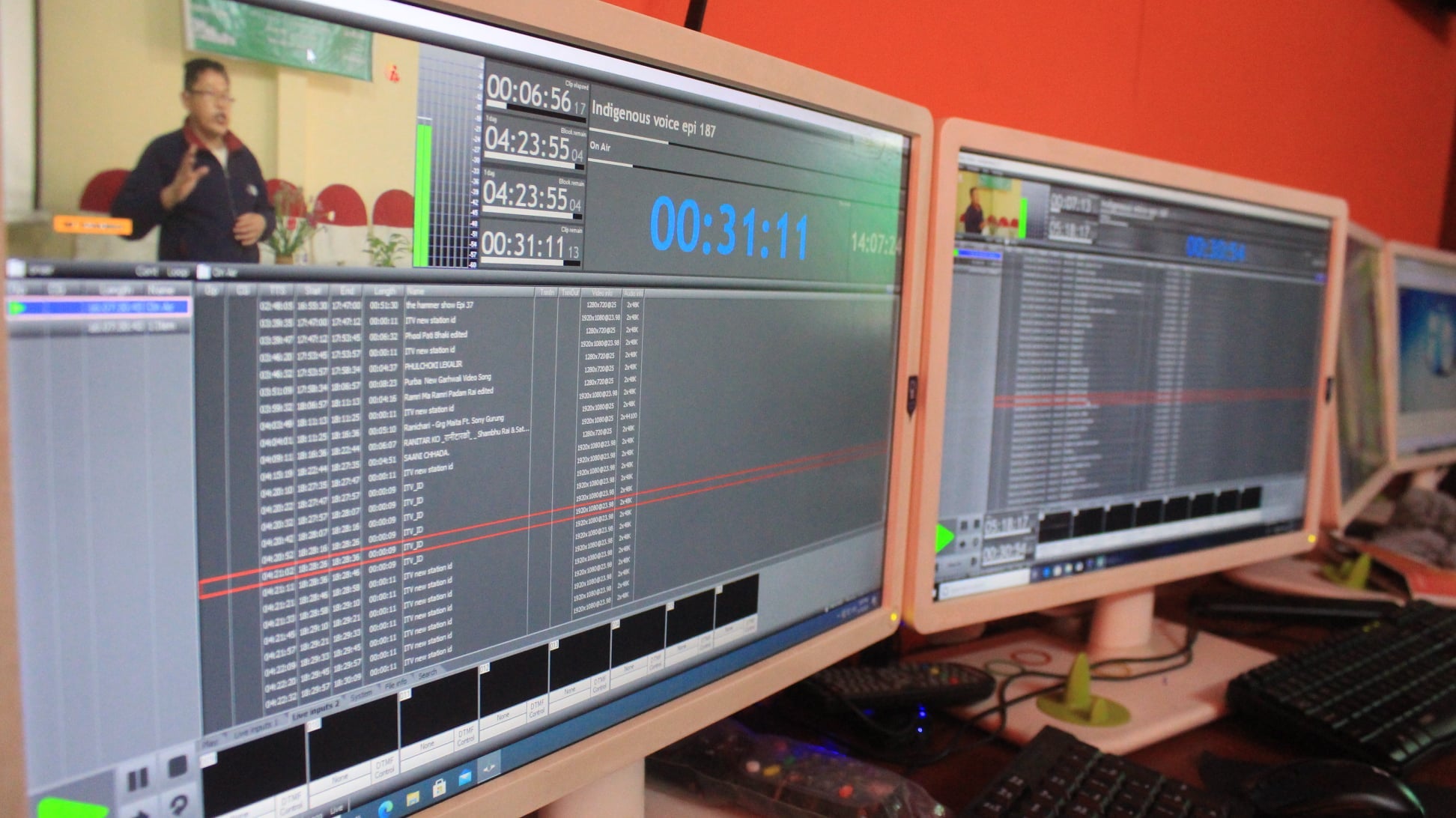
Indigenous Television, together with ITV-Nepal, now broadcasts through satellite and Direct-to-Home and Digital Video Broadcasting technologies, with a reach beyond the cities. Indigenous Television is also available on mobile platforms reaching across the world. The mobile apps and live streaming enable viewers outside of Nepal to watch Indigenous Television live via smartphones and the internet.
Today, Indigenous Television reaches even the most rural areas, providing Indigenous communities with access to programming in their own languages and serving as a voice that promotes their cultures, traditions, and belief systems. It is an alternative to the 116 other State-owned or commercial television channels in Nepal and a source of pride for Indigenous peoples who can assert their perspectives, share their stories, and make their political and cultural agendas known.
Television undoubtedly is the most effective medium of mass communication, and has been one of the fundamental means for Indigenous Peoples to maintain their languages and defend their rights. It is also a crucial contributor to language revitalization and an agent of change ensuring Indigenous Peoples’ human rights. Indigenous Television was the only official media partner of the UN from Asia during the global campaign of International Year of Indigenous languages in 2019 and during the International Decade of Indigenous Languages (2022-2032).
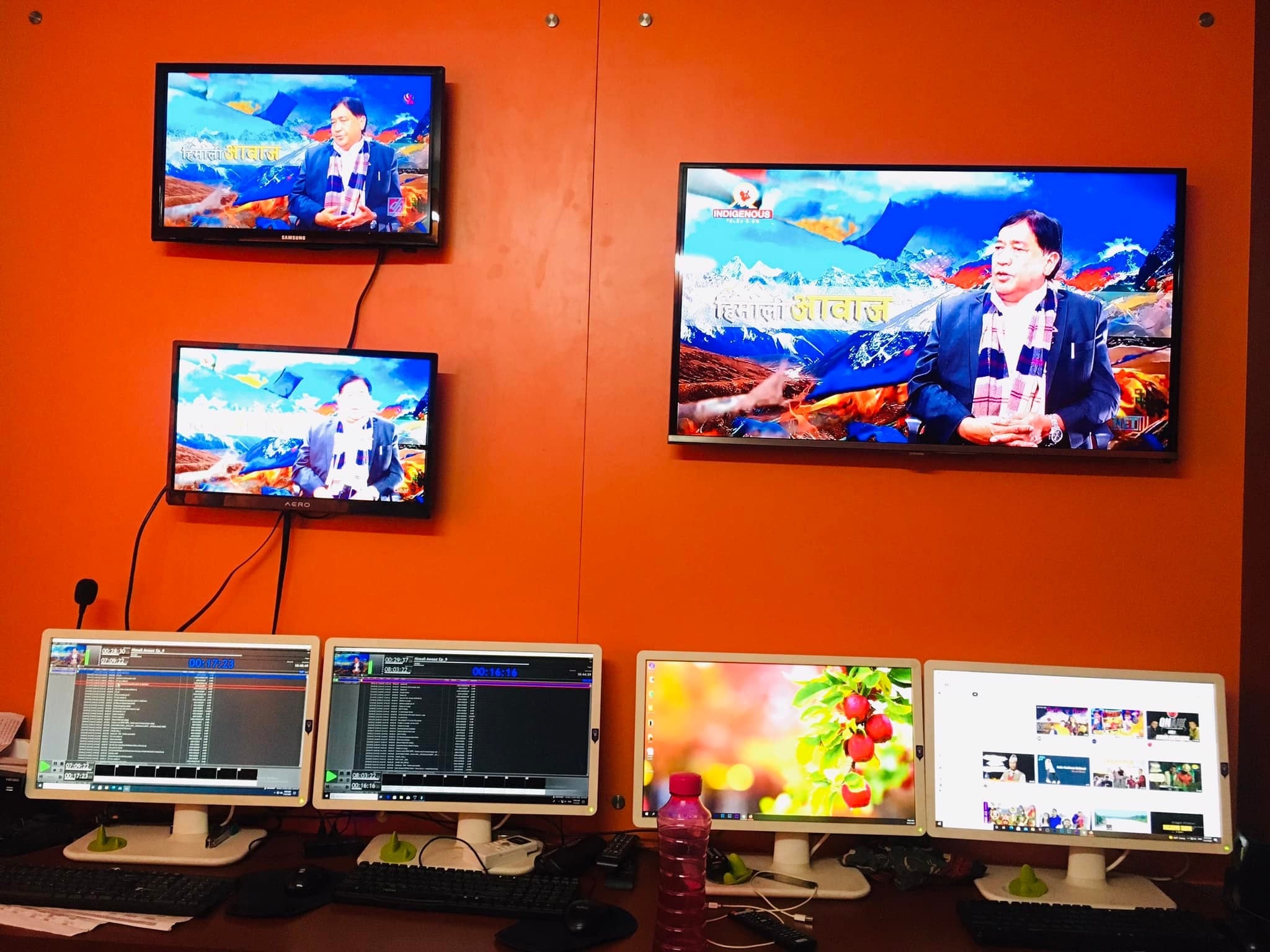
Content
Indigenous Television advocates for the fundamental human right to information and communication in the languages Indigenous Peoples speak and understand. Language is an important determinant of access to information, and the Khas-Nepali language has been the dominant language in the media since the advent of television. To counter this, Indigenous Television started producing television content about Indigenous Peoples’ issues and concerns in their mother tongues. Our producers are predominantly Indigenous youth, the majority of whom are women.
Seven years may be a short period to assess the impact of language promotion in Nepal, however, it is clear that television has been a significant tool for establishing and maintaining a positive image among Indigenous Peoples of having a distinct identity, which promotes pride in being Indigenous. As of October 2022, almost 2,500 hours of weekly television programs in 17 different languages have been recorded, broadcast, and digitally archived.
Indigenous Television is much more than a medium of information. It is also the only means of entertainment and education for Indigenous Peoples of Nepal in their languages. Television has helped in the normalization and revitalization of Indigenous languages, and to foster a positive attitude toward language and culture while also aiding in language learning. Native language programming has helped Indigenous communities feel a sense of connection to their community and culture.

Rita Rai is a Bantawa Rai language-based weekly Indigenous Television program producer and presenter at Indigenous Television. Since 2016, she has produced hundreds of episodes of Bantawa Rai language Television programs. She says, “Television programming in the Bantawa Rai Indigenous language helped to increase our vocabulary in our language.” She has also written a book based on the Television programs titled, “Learn Bantawa language.” People who have watched these programs are strengthening their vocabularies and becoming more comfortable speaking their language, which helps to retain that language.
Similarly, Uttam Kumar Sunuwar, a Sunuwar language-based weekly television program producer and presenter who also produces Sunuwar language lessons, says, “Television is more effective than radio, especially for teaching and learning languages,” he explains, since “children can learn by mimicking the dialogue.”
The experiences of Rai and Sunuwar are representative of the experiences of the other language program producers at Indigenous Television, who say that television programs have also helped language documentation. Television is the best means to transmit Indigenous language from elders to the younger generations, as it offers tremendous opportunities to record languages that previously had been transmitted orally.
The innovative use of television programming in Indigenous languages illustrates the potential of adapting existing technologies to revitalize languages. The power of Indigenous Television and the importance of delivering information in local language was felt more than ever during the COVID-19 pandemic. Indigenous Television was able to ensure access to health and life-saving messages to Indigenous communities in the languages they speak and understand. We produced more than 250 Public Service Announcements for preventive measures against COVID-19, including access and resources for PCR testing and medical care and healthcare services into more than 40 Indigenous languages.
The work of Indigenous Television of disseminating important messages about COVID-19 into various Indigenous languages was praised by the Office of the UN High Commissioner for Human Rights as one of the “promising practices” for responding to the pandemic. Indigenous communities are often located in remote regions, frequently left behind with limited or no access to healthcare and media support. During the COVID-19 crisis, Indigenous Television was able to address their right to health information in their mother tongue.
Challenges
Indigenous Television has amplified the expression of Indigenous Peoples’ voices, raised awareness about their fundamental human rights, allowed them to share knowledge, and has strengthened and maintained Indigenous languages. It has always communicated the concerns of Indigenous Peoples, bringing land, forest, and natural resource claims and human rights violations to international attention. For this reason, it has often been the target of government authorities who want to suppress the broadcasting of information on violations.
A lack of financial resources has further challenged us to sustain operations smoothly. Indigenous Television doesn’t receive any funding support from the government, nor does it generate revenue from the Indigenous communities. But, we are slowly learning to overcome these challenges and move forward. The media partnership with the United Nations in 2019 helped a lot in terms of television channels getting visibility internationally, thanks to those organizations who supported Indigenous Television to help preserve, revitalize, and promote Indigenous Peoples’ languages and linguistic diversity, and multilingualism throughout Nepal.
--Dev Kumar Sunuwar is Founding Chairperson of Indigenous Television.
Photos: Indigenous language television program producers, television studio, and master control room at Indigenous Television headquarters in Anamnagar, Kathmandu, Nepal.
